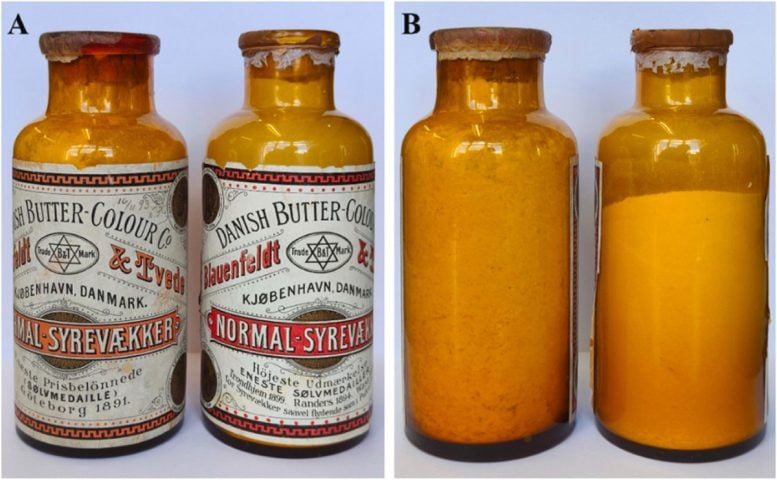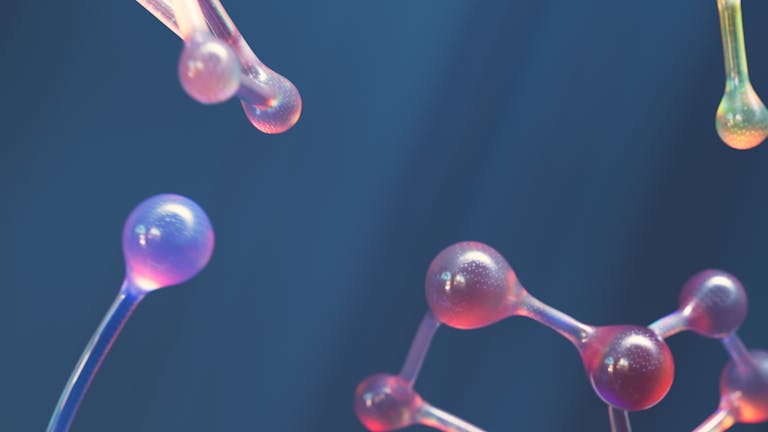Forgotten Bottles Reveal Denmark’s 130-Year-Old Butter Secrets

A surprising discovery in Denmark has opened up a new window into the history of butter-making. Two 130-year-old bottles, found in a Frederiksberg basement, turned out to be relics of Denmark’s pioneering dairy industry. Inside these antique glass containers, researchers uncovered dried starter cultures—the bacterial powders once used to standardize and improve dairy products.
Although the bottles had been sealed since the 1890s, scientists at the University of Copenhagen managed to recover valuable genetic information using modern DNA sequencing techniques. The results tell us not only what bacteria were present but also how they shaped Denmark’s butter production at the time.
This is not just a quirky find. It highlights Denmark’s role in industrial dairy innovation, the scientific challenges of the 19th century, and the way microbes have shaped food history. Let’s go through all the specifics of the study, what exactly was discovered, and what it tells us about butter, bacteria, and the beginnings of modern food production.
The Discovery
The bottles were uncovered during a move, in a dusty basement beneath greenhouses near Rolighedsvej in Frederiksberg, the site of the former Agricultural College. Researchers believe the bottles were stored there since the late 19th century and had not been touched in over a century.
Both bottles contained a fine white powder. Old labels suggested they were cultures of lactic acid bacteria, the same type of bacteria that plays a key role in fermenting milk and giving dairy its flavor and texture.
Scientists expected the samples to be degraded beyond use, but the team decided to attempt DNA extraction and sequencing. Their effort paid off. Even though no live bacteria were found, fragments of DNA survived long enough to reveal the genetic composition of these ancient cultures.
DNA Analysis Results
The team used metagenomic sequencing to study the powders. That means instead of trying to revive bacteria, they extracted DNA directly and analyzed all the genetic fragments present.

Here’s what they found:
- The 1893 bottle contained a large proportion of Lactococcus cremoris DNA. Researchers were able to achieve about 76% genome coverage when comparing it with a modern reference strain (L. cremoris MG1363). This means they could reconstruct most of its genetic blueprint.
- The 1899 bottle, however, yielded much less bacterial DNA. Only small fragments of Lactococcus were found, covering less than 1% of the genome, likely due to greater degradation or different original content.
- Both bottles contained heavy contamination with Cutibacterium acnes, a common skin bacterium best known today for causing acne. This bacterium has a very strong cell wall, allowing it to survive long periods of time and remain detectable even after 130 years.
- Traces of other bacteria, including Staphylococcus aureus and Vibrio furnissii, were also found. These can be harmful to humans, but their presence is more a reflection of the hygiene standards of the time than of the starter culture itself.
Functional Traits of the Old Dairy Bacteria
One of the most fascinating aspects of the study was the discovery of functional genes within the surviving Lactococcus cremoris DNA.
- The bacteria carried genes for casein degradation, which is crucial for breaking down milk proteins during fermentation.
- They also had pathways for lactose metabolism, enabling them to thrive in milk environments.
- Genes for amino acid catabolism were present, which contribute to flavor formation in dairy products.
- Importantly, the cultures had genes linked to acetoin and diacetyl production. These compounds are responsible for the characteristic buttery aroma still prized in dairy today.
- The researchers even found a lactococcin gene (lcn), which encodes a bacteriocin—a molecule that can inhibit competing bacteria. Interestingly, a similar gene is still present in some modern dairy strains, showing a direct line of microbial continuity from the 19th century to today.
Why Starter Cultures Were Important
At the end of the 19th century, Denmark was becoming a major butter exporter, especially to England. With this expansion came a need for standardized production. Traditionally, farmers fermented milk spontaneously in jars of sour milk kept near the stove. This method was inconsistent—flavor and safety varied widely.
Pasteurization solved part of the problem by killing harmful microbes, but it also destroyed the beneficial ones needed for fermentation. That’s where starter cultures came in. By deliberately adding back selected strains of bacteria, dairies could ensure:
- Safer products with fewer pathogens.
- More consistent flavor and texture, no matter where the butter was made.
- Longer shelf life and higher quality for international markets.
These innovations laid the foundation for Denmark’s global dairy industry. Companies like Christian Hansen and Blauenfeldt & Tvede emerged during this period, turning scientific research into large-scale food production.
Hygiene Lessons from the Past
The DNA analysis also revealed that hygiene in 19th-century dairies was far from today’s standards. The presence of skin bacteria and pathogenic strains suggests contamination was common, even in commercial starter cultures.
This is not surprising. At the time, microbiology was still a developing science. Louis Pasteur’s discoveries were only a few decades old, and modern sanitation practices had not yet fully taken hold. The discovery reminds us that early industrial food production involved constant experimentation and that safety was gradually improved through trial, error, and scientific advances.
Broader Significance of the Study
The discovery of these bottles is more than just a historical curiosity. It shows:
- Genomic archaeology of food is possible. Even after 130 years, degraded DNA can reveal the microbial world of the past.
- Continuity in food microbes. Traits valued in 19th-century butter, like buttery flavor compounds, are still sought after in today’s dairy cultures.
- The role of science in food history. Denmark’s dairy success was not simply about farming traditions—it was built on deliberate research, innovation, and industry collaboration.
A Closer Look at Lactococcus cremoris
Since this bacterium played the starring role in the study, let’s explore it further.
Lactococcus cremoris is one of the most important lactic acid bacteria in dairy production. It is widely used in the fermentation of milk into butter, cheese, and cultured dairy drinks.
Key facts:
- It produces lactic acid, which lowers the pH of milk, preserving it and preventing the growth of harmful bacteria.
- It can produce diacetyl, the compound responsible for buttery aroma.
- It thrives in milk environments, thanks to its ability to metabolize lactose efficiently.
- It contributes to texture and flavor development in cheeses such as cheddar.
The fact that researchers recovered a significant portion of its genome from the 1893 sample is remarkable. It shows how stable and resilient certain bacterial traits are across generations of dairy production.
Butter, Exports, and the Danish Economy
In the late 19th century, Denmark was undergoing major changes. Agriculture was shifting from small-scale farms to industrialized production, and butter became a cornerstone of the economy.
By exporting butter to Britain, Danish producers gained access to a lucrative market. But the challenge was consistency. English buyers wanted butter that tasted the same from shipment to shipment. The introduction of starter cultures, combined with pasteurization, allowed Danish producers to meet these demands and dominate the export trade.
This small microbial detail—adding the right bacteria at the right time—played a surprisingly large role in establishing Denmark’s reputation as a reliable supplier of high-quality dairy.
What This Means for Food Science Today
Modern food science often focuses on cutting-edge biotechnology, probiotics, and genetic engineering. But this study reminds us that the roots of these practices go back over a century. Early dairies were already experimenting with microbial control, standardization, and reproducibility.
It also highlights the importance of preserving historical samples. Old bottles, jars, and archives may still contain genetic clues that shed light on how our food systems developed. Similar approaches could be applied to bread starters, beer yeasts, or even ancient pickling jars, helping us understand how fermentation shaped human diets.
Final Thoughts
The two forgotten bottles from Frederiksberg are a unique glimpse into a turning point in food history. They show us that even in the 1890s, Danish dairies were thinking scientifically, using bacteria intentionally to improve flavor, safety, and quality.
At the same time, the study reminds us how far hygiene and microbiology have come. Today’s dairy products benefit from strict controls and precise microbial management, but the basic principle remains the same: good bacteria make good food.





